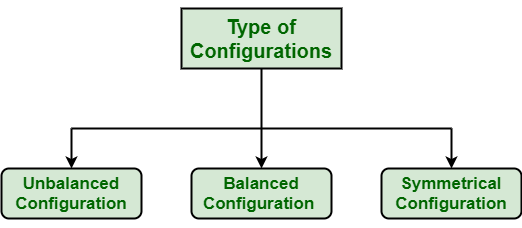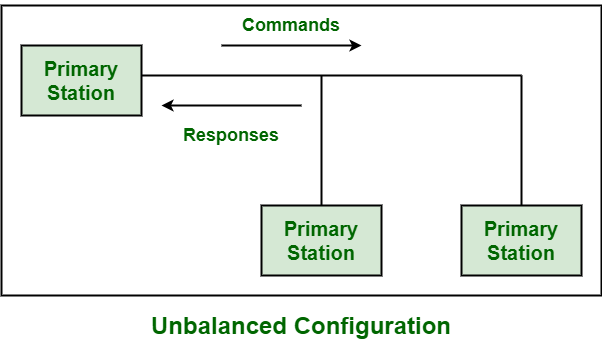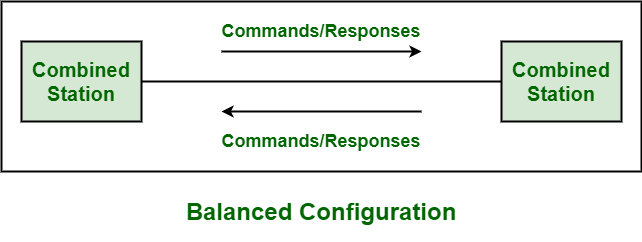Type of Configurations provided by HDLC
Last Updated :
30 Jul, 2020
High-Level Data Link Control (HDLC) is a protocol that is generally developed by the International Organization of Standardization (ISO). HDLC is basically a group of data link layer protocols of the Open System Interconnection (OSI) Model that is required to transmit synchronous data packets or frames among point-to-point nodes. It also provides both connection-oriented service and connectionless service.
Types of Configurations :
HDLC generally explains different types of configurations for different types of stations i.e., Primary station, Secondary station, and Combined station. Configuration simply means relationship among various hardware devices on a link. These different configurations are given below :

1. Unbalanced Configuration :
Unbalanced Configuration is generally required for Primary stations. In this configuration, one station is primary and all stations are secondary. This configuration mainly arises due to reason that Primary Stations are basically used as controlling stations that control secondary station on data link. It also consists of two or more secondary stations. It supports the following operations :
- Both mode of transmission i.e., Full duplex and Half-duplex
- Both mode of networks i.e., Point-to-Point and Multi-Point networks
Example –

2. Balanced Configuration :
Balanced Configuration is generally required for Combined stations. This configuration consists of two combined stations that have equal and complementary responsibilities to enhance and emphasize the working and qualities of each other as shown below in the diagram. It supports only specific operations as given below :
- Both mode of transmission i.e. Full duplex and half-duplex, or
- One mode of network i.e. Point-to-Point
Example –

3. Symmetrical Configuration :
Symmetrical Configuration is generally required for Secondary stations that are usually combined with Primary stations. This configuration consists of exactly two nodes i.e. two independent point-to-point unbalanced station configurations.
Sometimes, it is also a combination of balanced and unbalanced configurations. This configuration is rarely used in present technologies. Each of stations in network has basically two different kinds of status out of which one is Primary status and other one is Secondary status. Even each of station is generally considered as two stations logically.
Example –

Share your thoughts in the comments
Please Login to comment...